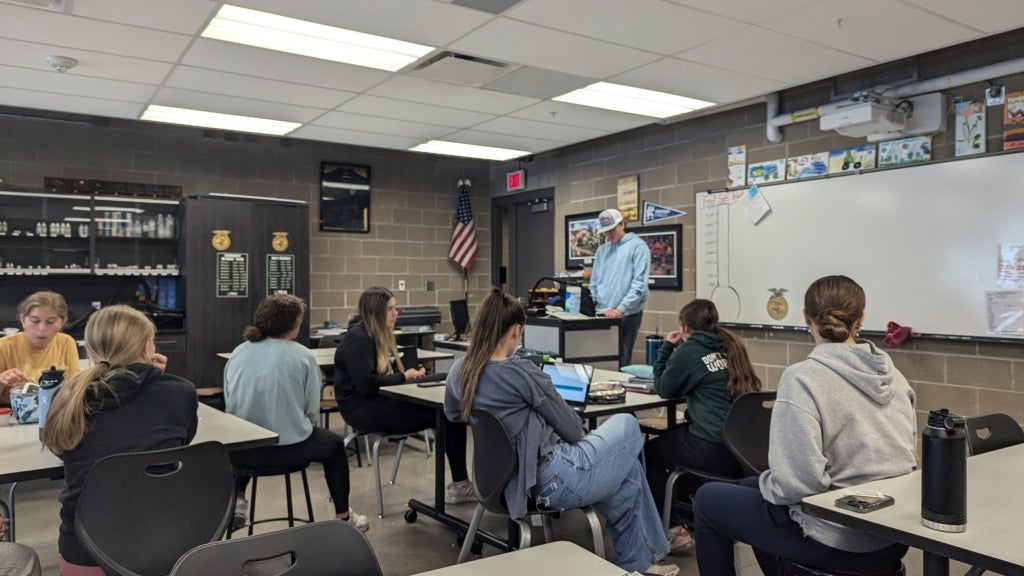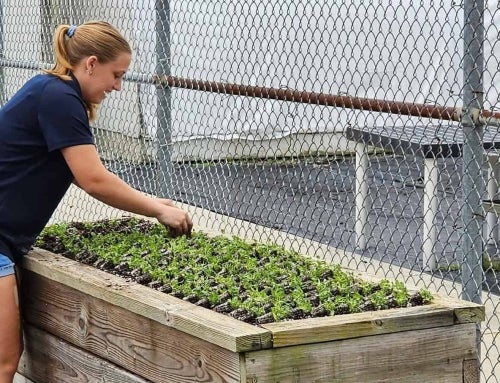
Pella FFA public relations committee members meet to discuss the latest edition of their chapter newsletter.
Starting a newsletter can be a fun and interactive way to engage with your fellow FFA members, parents and guardians, Alumni and Supporters, school administrators and community members.
In Iowa, the Pella FFA Chapter started a digital chapter newsletter after they realized they needed to improve their communication methods.
“We found that FFA members who are not in an agriculture class in any given semester are in need of an effective format of communication sent to them,” says Pella FFA advisor Jacob Bowers. “Additionally, although students hear about what is happening in FFA during class, it doesn’t necessarily always make it home to their parents. I’ve always felt that if a student’s parent knows what’s going on in FFA, participation increases — likely due to reminders or conversations at home.”
The Pella FFA newsletter goes out to chapter members and parents every Monday and is posted to the chapter’s social media accounts. Members stick to a simple format by answering three questions:
- What happened last week?
- What’s happening this week?
- What’s coming up?
“We do it in digital format to save on costs and push information out quickly,” Bowers says. “The FFA reporter leading the public relations committee produces the newsletter using templates from Canva, and it’s their goal to send the newsletter to the officer team every Friday for review. Officers make revisions over the weekend and we send it out on Mondays.”
Interested in creating a newsletter for your chapter? Bowers offers the following five steps to help make it a success.
1. Utilize Canva templates.
Students and educators can apply for free CanvaPro accounts. Once it’s created, the newsletter can also be shared with multiple collaborators in Canva.
2. Start a public relations committee.
The Official FFA Manual states that a chapter reporter’s duties include publishing a chapter newsletter or website as well as serving as chair for the public relations committee.
“The duties of the reporter are extremely demanding and cannot be fully accomplished without a public relations committee,” Bowers explains.
3. Produce your newsletter frequently.
A quarterly newsletter takes a lot of planning and can be stressful because of all the information to fit in. Producing a newsletter weekly or bi-weekly is a more timely option, and if anything is accidentally missed, it can be included in a future newsletter.
4. Give the reporter and public relations committee freedom to make the newsletter their own.
Although starting something new can be exciting, let these individuals find what works best for them.
“It’s their newsletter and they own the project,” Bowers says. “They’ll accomplish more with advisor guidance instead of directing how it needs to be done.”
5. Establish norms and expectations together for accountability.
Be on the same page about how the newsletter will be produced. Reassess the norms and expectations frequently to adapt to the committee’s needs and busy schedules.
Scroll through this past issue of the Pella FFA Chapter’s newsletter for additional inspiration.
Stay In-the-Know
Did you know National FFA produces five newsletters that are geared toward members, advisors, alumni, supporters and more? Subscribe to these today — all you need is a current email address!











